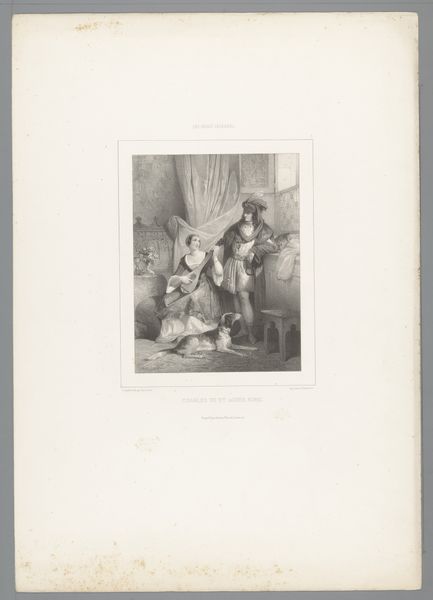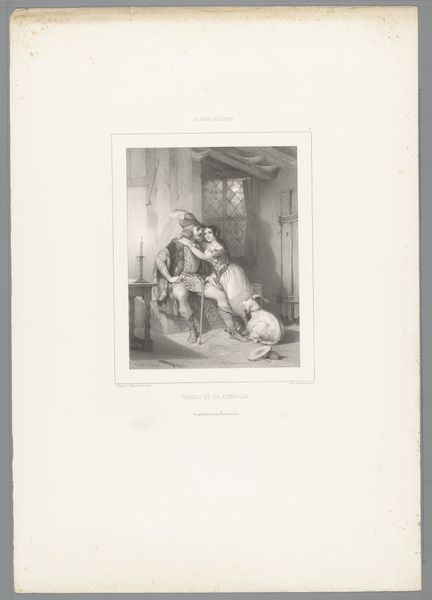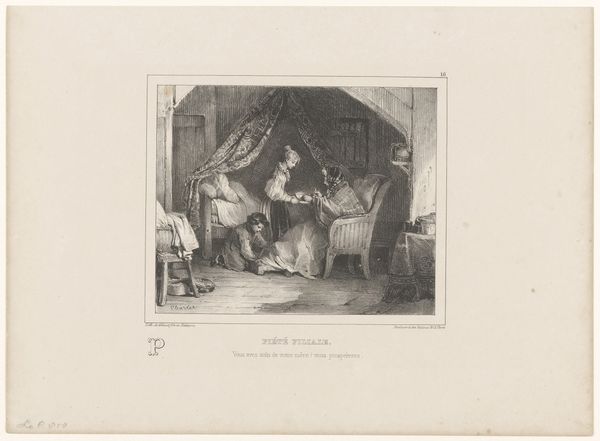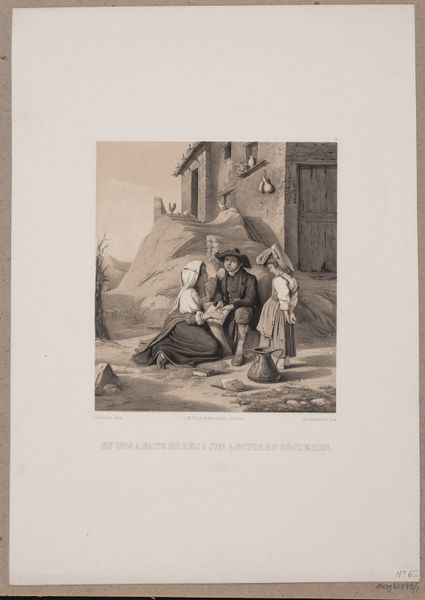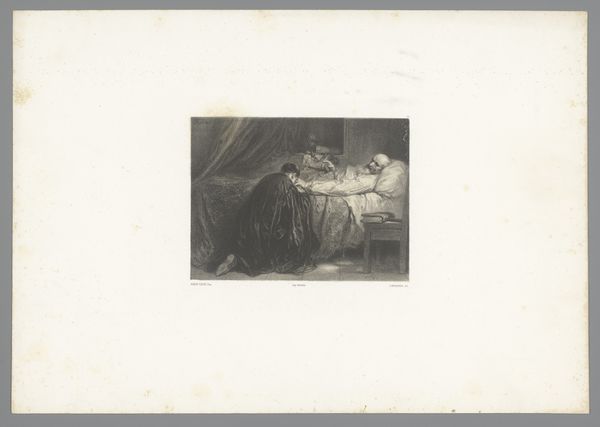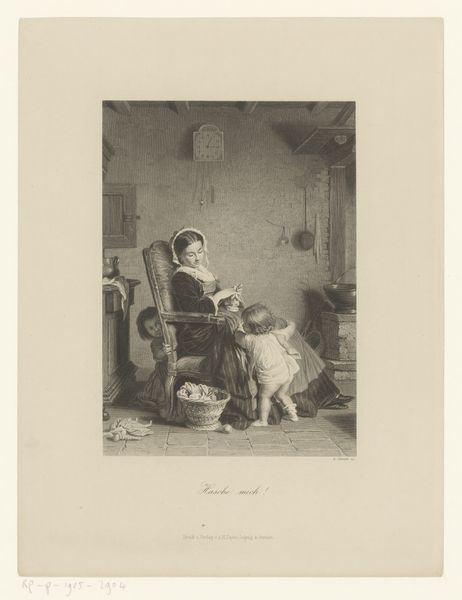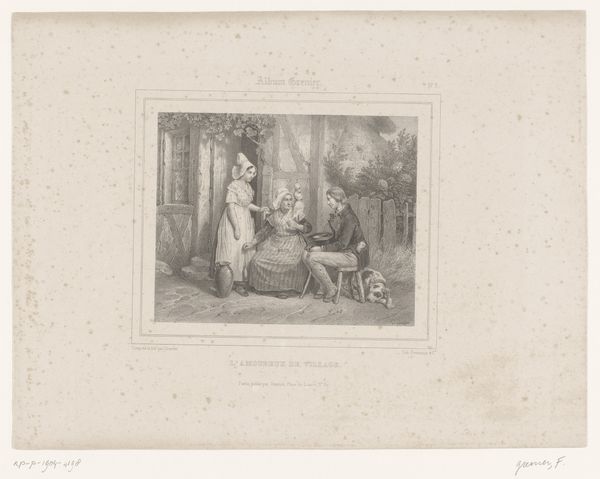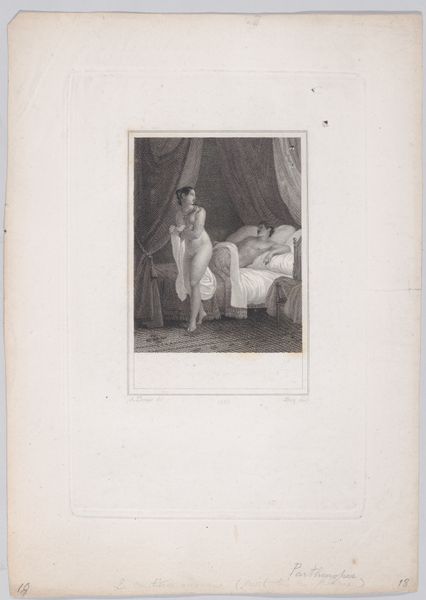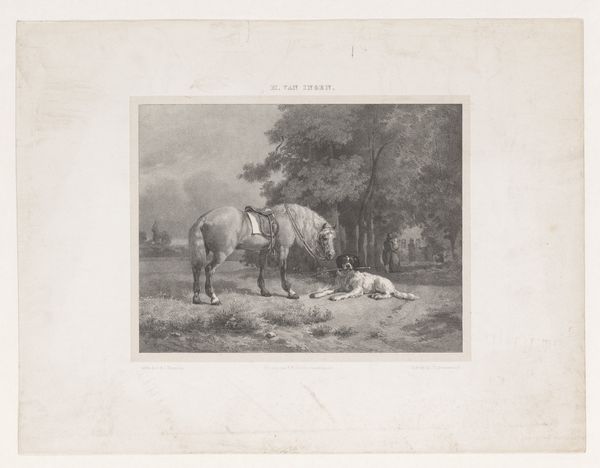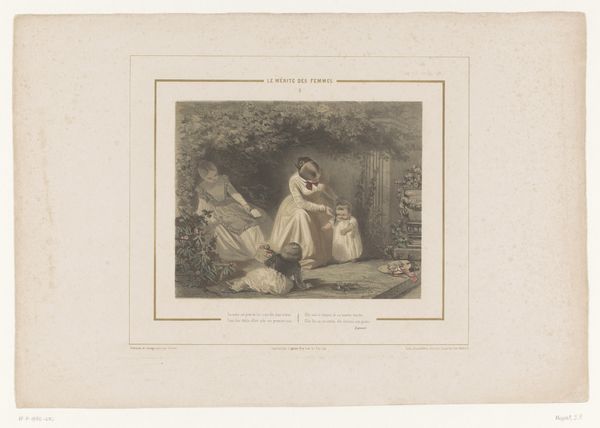
print, engraving
#
neoclacissism
#
aged paper
#
light pencil work
#
narrative-art
# print
#
old engraving style
#
figuration
#
line
#
history-painting
#
academic-art
#
engraving
Dimensions: height 255 mm, width 339 mm
Copyright: Rijks Museum: Open Domain
Curator: What strikes you first about this print, entitled "Terugkeer van Marcus Sextus," crafted between 1799 and 1820? Editor: Its somber mood is almost palpable. The figures are arranged with such careful precision, their poses suggesting a profound sense of grief or loss. Curator: Precisely. We see the classical themes that define academic art—the idealized human forms rendered with fine lines—but it’s also a product of a specific engraving tradition. Think about the engraver’s role, meticulously transferring an image through laborious, skilled work. This wasn't merely replication but an act of interpreting the image within the means of the medium. Editor: The texture achieved through line work alone is fascinating, especially when you think of printmaking's place in the art market. Prints made art accessible to a new audience beyond wealthy patrons of paintings. Curator: Exactly! These prints, like this rendering of "Marcus Sextus", facilitated the broader dissemination of neoclassicism ideas. What we observe is not merely art but a commodity distributed within socio-economic structures, influenced by industrial advancements. The engraver's agency should also be considered; how they engaged, enhanced, or reinterpreted the artwork they copied reveals social dialogues about art itself. Editor: From a purely formal perspective, observe how the artist uses light and shadow to sculpt the figures and create depth. The strong contrasts heighten the emotional impact and direct our gaze. Consider, too, how the composition—a pyramidal arrangement of figures—stabilizes the scene and communicates ideas of the importance of balance, order, and rationality within the image. Curator: And within these compositional arrangements are clues about who was intended to access and own these prints; what knowledge, what understanding was anticipated? What social expectations were present in homes where such engravings were mounted on walls? The object is one thing, but it is not independent of the broader social reality in which it exists and the labour from which it came. Editor: A perfect encapsulation of the print, revealing not only its visual story but also the wider context that shaped its creation and reception. Curator: Indeed, looking closer can open doors not only to its composition, but also its conditions of production and the reality of artistic enterprise during its time.
Comments
No comments
Be the first to comment and join the conversation on the ultimate creative platform.
